The acorn woodpecker displays some of the most interesting and complex feeding and social behavior among birds. A lot of its behavior may even seem completely at odds with what you know about “typical” woodpecker behavior.
Let’s take a look at the fascinating life history of these colorful, charismatic birds.
The first thing you’re likely to notice about acorn woodpeckers is that they’re in a flock. If you see one, you’ll probably soon see more. At least this is what I first noticed when I saw them around Santa Rita Lodge, located in the birding hotspot of Arizona’s Madera Canyon.
I’ve long enjoyed observing woodpeckers on my outdoor rambles. And mostly, you are seeing a solitary individual or perhaps a pair. I’ll be out snowshoeing and see a pileated woodpecker hammering away at a dead tree. Or perhaps a hairy woodpecker will show up at the backyard feeder. They’re always enjoyable birds to watch, but you often don’t see any of them.
With acorn woodpeckers, it’s like a riot of sound, color and flight acrobatics. The Cornell Lab of Ornithology, my trusted source for all things woodpecker, describes them aptly as “a troupe of wide-eyed clowns.”
Admittedly, other birders at Santa Rita Lodge seemed hardly to notice. They were looking for Southwest specialties and rarities. Acorn woodpeckers are entirely predictable and easily findable in their range. But look closer and there’s a whole lot going on.
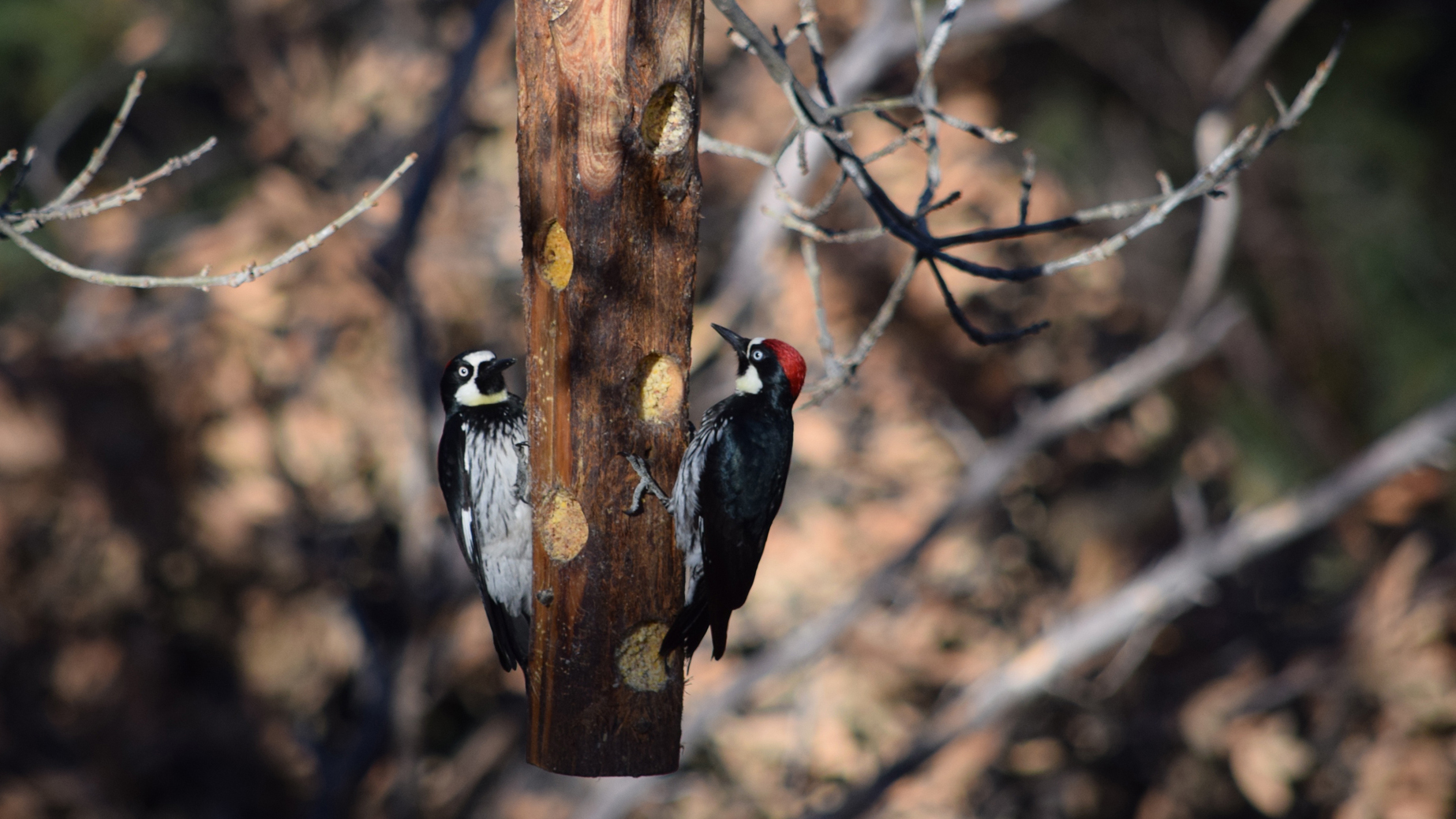
Acorn woodpeckers are indeed the most social of North American woodpeckers; they’re organized in family groups of up to twelve individuals (more on this relationship in a bit). All the activity happens around a most interesting tree and the territory surrounding it.
When you think of woodpecker behavior, chances are you picture a woodpecker drilling into a tree to access larvae or other invertebrates. The acorn woodpecker drills into trees to create storage holes. A family unit uses one tree to drill with thousands of holes, which they then fill with acorns.
These woodpeckers store acorns on a scale worthy of one of those cable hoarding reality television shows. A single granary tree, according to the Cornell Lab, can contain an astonishing 50,000 acorns and other nuts.
The acorn woodpecker plucks an acorn and sticks it in the tree hole. It then tamps it down – tap, tap, tap – with its beak to ensure a snug fit. As the acorn dries, it might loosen, so the acorn woodpeckers are constantly tending the tree, moving acorns around to appropriate-sized holes.
Why do the woodpeckers do this? It is an effective strategy for surviving cold weather without the need for migration. Acorns are rich in fat. If they were stockpiled together, they could be prone to getting mold or otherwise becoming inedible. Storing them on the ground would make them accessible to deer, rodents, turkeys and other acorn eaters.
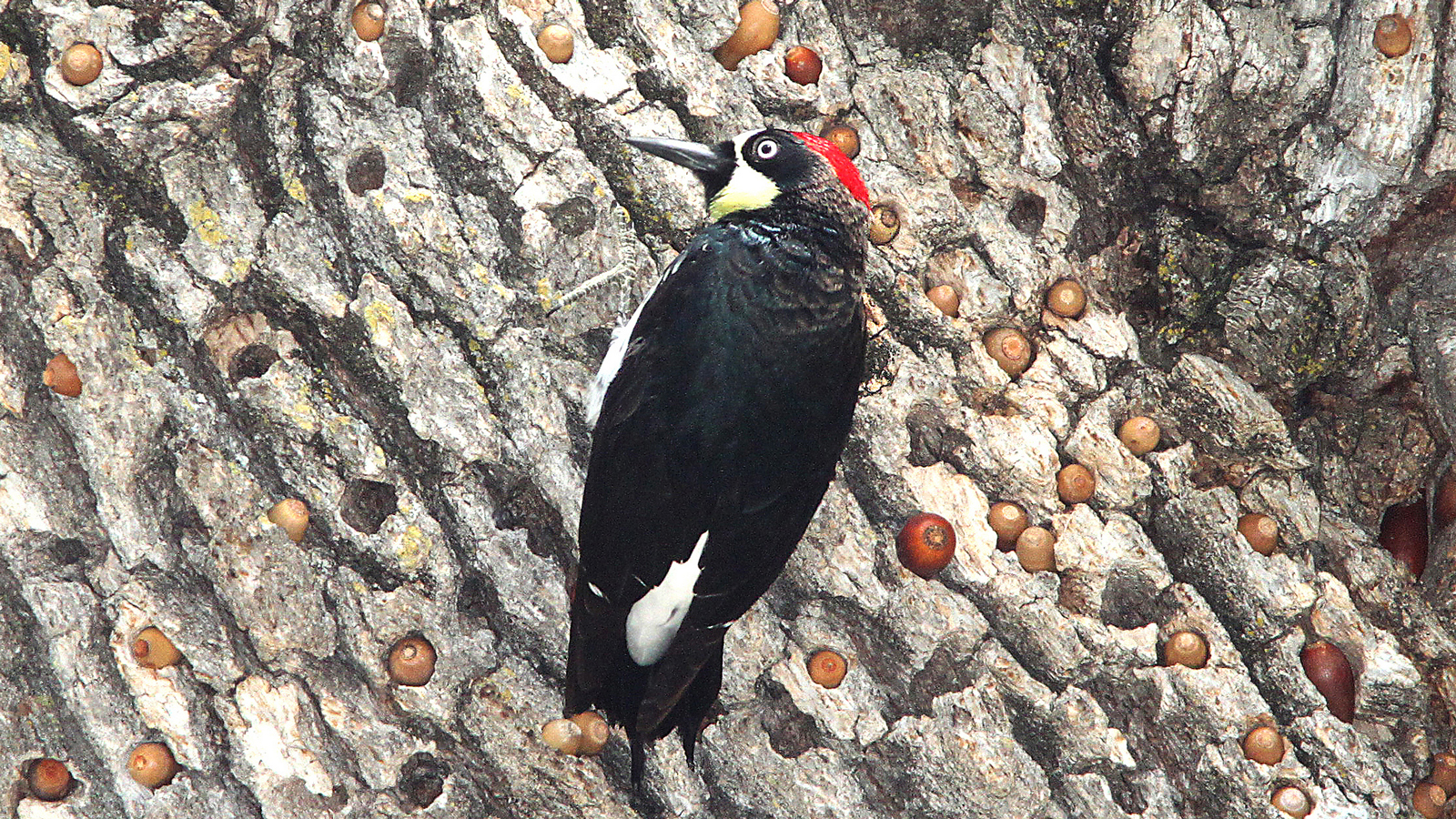
The granary tree is easier to defend (and one acorn woodpecker is posted as a sentry against marauding ground squirrels and other woodpeckers).
Other birds stash food for the winter, of course. The Clark’s nutcracker is famous in this regard: it caches an astonishing number of pine seeds around the forest (and remembers where it hid them). But the acorn woodpecker is one of the champion food hoarders in the bird world.
Acorn woodpeckers eat a variety of other foods; like many woodpeckers, they eat plenty of insects. They just prefer to snatch flying insects from the sky rather than pecking them out of trees.
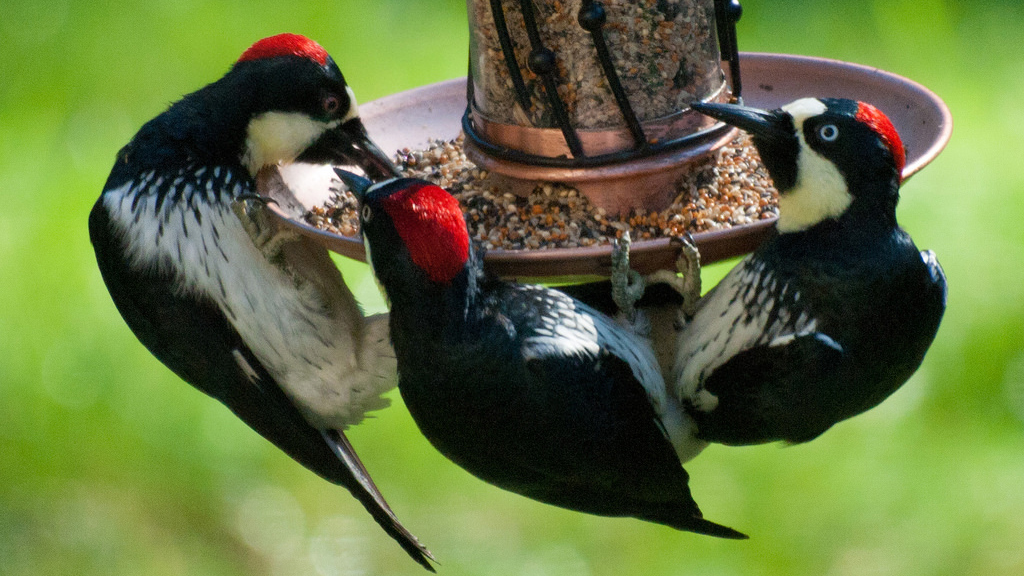
They are adaptable birds and will readily set up territories in suburbia. They are not picky about what they use as granaries: a telephone pole or even the side of a house will substitute for a tree. This makes them less-than-endearing to many living in their range.
The Cornell Lab of Ornithology reports that this sometimes leads to acorns stowed in places they can’t reach them. In one instance, researchers found 485 pounds of acorns in an Arizona water tank.
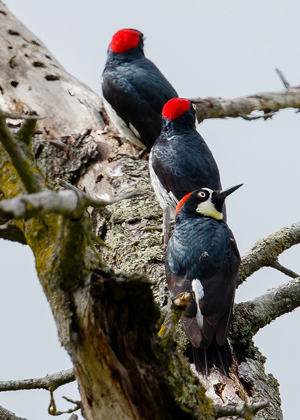
The social lives of these woodpeckers may be even more fascinating than their hoarding behavior. Walt Koenig’s lab at Cornell has been studying them since 1974; this long-term study continues to reveal the intricacies of an acorn woodpecker family unit.
Koenig writes: “The mating system of this species is one of the most complex of any vertebrate, with social units consisting of up to seven related males competing for matings with up to three related females, all laying eggs in a single nest, and up to 10 nonbreeding helpers of both sexes (offspring from prior years).”
I encourage you to check out his lab’s page for detailed information, including a lot of published papers, on their behavior.
Basically, the acorn woodpeckers live as family units within a territory, nesting communally. Young woodpeckers remain with their parents for several years to help raise young. They eventually move off to check out other woodpecker territories, eventually settling into a new colony when they find one where an adult has recently died. This dispersal also helps reduce inbreeding, since there are multiple matings happening among a family group of birds.
![Photo © Pablo Andrés Ortega Chávez (Flickr) [GFDL 1.2 or GFDL 1.2], via Wikimedia Commons](https://blog.nature.org/wp-content/uploads/2017/04/Woodpeckers_Family_4101459779.jpg)
As Bill Schutt, in his excellent recent book, Cannibalism: A Perfectly Natural History, writes, “Presumably this is because the oldest hatchling would be the most likely to survive. To eliminate this advantage, the birds will keep eating each other’s eggs until they both lay their eggs on the same day, a process that can take weeks.”
That’s a lot of potential egg eating, an unusual behavior in birds. Undoubtedly, as researchers continue investigating the complex lives of these birds, more surprises are in store.
Acorn woodpeckers are not difficult to see in many parts of their range, which includes coastal areas of Oregon and California, the U.S. Southwest, Mexico and Central America. Since they protect territories, they can reliably be found, year round, in many nature reserves and parks.
They were difficult to miss in Madera Canyon. That may make them less-than-exciting for the dedicated bird “ticker” but for a bird observer, their behavior provides endless fascination. Stake out a granary tree with a binocular, and let the show begin.
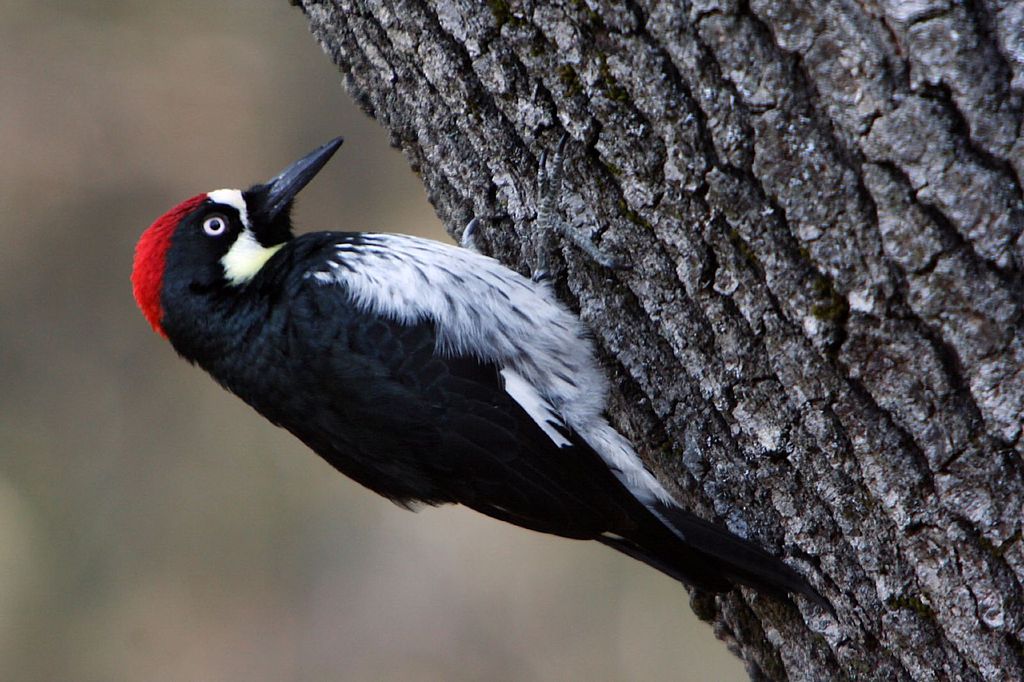



Intriguing – thank you! I remember a couple of years ago getting a notice from the electric company that they were going to replace the pole in our yard – a granary pole! I went through official channels and after several conversations, got them to agree to leave the old one in place and put a new one next to it – thus saving the granary – and maybe the woodpeckers. They’re still living in our yard today.
Is it possible to have an acorn storing woodpecker in Columbus Ohio. I have lots of damage from a woodpecker on the wood of my home just over the past 2 weeks, right next to a tree dropping acorns.
Thanks for your question. Acorn woodpeckers are not found in Ohio. It is likely a pileated woodpecker or flicker causing your damage.
Embarrassingly enough, I have been, until today, completely unaware of the Acorn Woodpecker. I like to walk my dogs at a park near my house (Burbank/Glendale) sandwiched between the 5 freeway/L.A. river and the houses of the Equestrian neighborhood. Basically, its a long narrow strip of grass/dirt with lots of trees. California Oaks and Sycamores with some Olive trees thrown in now and then.
For the past few visits I have seen one or two woodpeckers way up at the top of what appears to be a dying or dead sycamore. It wasn’t until today that a nice man from Pennsylvania with a very expensive looking camera told me those weren’t Downy woodpeckers but Acorn. Fascinating as I had never heard of them. Now, after reading your article, today’s bird antics make so much sense as there were at least 6 of them flying all around. Flying between the dead sycamore to two tall palm trees across the street and then one at a time they would fly to just below the houses roof line where another acorn woodpecker would pop up their head, fly out, while the other one would go inside under the roof. This went on for over 20 minutes or more before I moved on (my dogs didn’t enjoy the show as much as me, hah). Your article has given me great insight now into this lovely bird and many thanks to the kind gentleman who let me know the name of the bird I was watching.